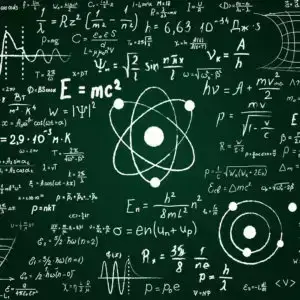Astrophysicist Prof Tomonori Totani says research could be crucial breakthrough in search for elusive substance
Nearly a century ago, scientists proposed that a mysterious invisible substance they named dark matter clumped around galaxies and formed a cosmic web across the universe.
What dark matter is made from, and whether it is even real, are still open questions, but according to a study, the first direct evidence of the substance may finally have been glimpsed.
More work is needed to rule out less exotic explanations, but if true, the discovery would go down as a turning point in the decades-long search for the elusive substance that is said to make up 27% of the cosmos.
“This could be a crucial breakthrough in unraveling the nature of dark matter,” said Prof Tomonori Totani, an astrophysicist at the University of Tokyo, who said gamma rays emanating from the centre of the Milky Way appeared to bear the signature of the substance.
Details are published in the Journal of Cosmology and Astroparticle Physics.



Not a physicist.
I seem to recall that there was an article sometime back that claimed that the ‘dark matter’ theory had been disproven, or was being strongly reconsidered.
Can someone point me to a good layperson explanation?
Thank you.
I am a physicist, studying dark matter.
Firstly, It would be nearly impossible to prove that dark matter definitely does not exist.
And secondly, there are no alternatives to dark matter that come even close to explain our universe as successfully as dark matter.
That doesn’t mean it’s right, but any explanation without dark matter is not favored IMO.
In a short summary. Something is wrong with the spin of galaxies. There is more mass than we can account for, and it’s distributed wrong.
Either the laws of gravity are slightly wrong, or there is something out there with mass, but no interaction with other matters (light particularly).
More recent, more detailed studies have shown that the error is not consistent. Therefore either the laws of physics vary from galaxy to galaxy (very unlikely) or it’s something physical, rather than a law error.
That leaves dark matter, sometimes called W.I.M.Ps (Weakly Interacting Massive Particles). They don’t seem to interact with electromagnetism at all, and even any strong or weak force interaction is minimal. It only interacts gravitationally.
We know the interactions at minimal due to gravity mapping. It seems to form a cloud around galaxies, rather than collapsing in. To collapse in, they must interact to exchange momentum. If they only interact by gravity, that collapse will be extremely slow.
That is most of what we can be fairly sure of. There’s a lot of speculation around this, and we might be barking up the wrong tree completely. However dark matter via WIMPs seems to be the most consistent with the evidence right now.
Edit to add.
This experiment seems quite ingenious. It assumes that WIMPs have a mix of both matter and antimatter. Ever so often a matter/antimatter pair get close enough to annihilate. This creates a pair of gamma photons. The existence of these would help back the existence of physical WIMPs. The energy would also tell us something of their mass (photon energy = mass energy + momentum energy). That will help narrow down where to look in our particle accelerator data.
Thank you for that concise explanation. Any idea why they think these gamma detections are not from regular matter/anti-matter annihilation?
It would be a mix of relative rates and the exact energy.
If you pick an area of “empty” space where you expect very little dark matter, you will get a baseline reading. When you aim at an area expected to be dense in dark matter, you will expect to get a higher reading. E.g. 10 counts a day, Vs 100 per day. This is basically how radiation detection works on earth, so the maths is well studied.
The other thing is energy levels. 2 electrons hitting have a distinct energy. It will vary upwards slightly, due to kinetic energy, but not that much. We also know the annihilation energy of other forms of matter, from earth experiments. A reading distinct from anything normal would be a good signature of an unknown type of matter annihilating.
There are also extra complications from things like red shift, but those can be measured in other ways, and corrected for.
The order of theory and discovery also helps. “Finding X that happens to support Y” is a lot weaker than “Predicting X from theory Y, then going and finding it”. If you run 1 million experiments, a 1 in a million result is quite likely by pure fluke. A 1 in a million result from a single, focused experiment is a lot more powerful.
Thanks. I’ll have to re-read this several times, but it’s my fault, not yours.
It’s a very good explanation for a non-tech person like me. You should consider teaching.
There’s a lot more to teaching than just good explanations. I do enjoy trying to explain complex science in more understandable ways however.
As for struggling, we all do at times, pushing through is how we get better. Also science is a little like a spider web. If you look closely, at just a few strands, they don’t make obvious sense. It’s only when you build up a broader picture that it becomes obvious and easy. Building that picture, unfortunately, requires pushing through the “what the hell, I can’t make sense of this!” stage.
Happy thanksgiving!
Daniel and Kelly’ Extraordinary Universe podcast discussed it in an entertaining and enlightening episode I enjoyed amidst a snow storm last year: https://podcasts.apple.com/us/podcast/how-can-we-see-dark-matter/id1436616330?i=1000440743429
It made me wonder if ancient gravitational waves reverberating throughout the cosmos could be the culprit, but it appears not based on current evidence.
Thanks
I remember that as well.